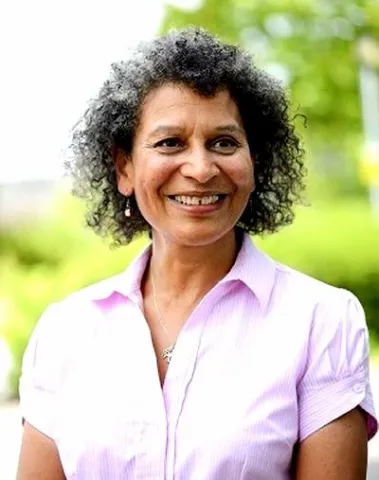Project overview
SUMMARY
The Problem: Physical inactivity is a global pandemic, responsible for 5.3 million deaths annually. Older people are the least active, at great cost to healthcare and the general economy. The World Health Organisation (WHO) has set activity recommendations for older people to lead a more active lifestyle. Golf is associated with health benefits and increased life expectancy but it is not known if golf meets all the WHO requirements, specifically for strength and balance. This study aimed to help address this gap in knowledge about strength and balance in older recreational golfers.
Research questions to find solution
a) Do strength and balance differ between older golfers and sedentary non-golfers?
b) Do any differences between golfers and non-golfers differ for men and women, and with increasing age?
c) What measures of physical function are able to show differences between age groups and to distinguish golfers from non-golfers? Can these be used in later studies to assess the effects of golf in those new to the game?
UK Golf ‘Strength & Balance’ Project
What the study involved: We studied 152 males and females of different ages in eight groups according to age (young males and females, 18-35 years; and older 65-79 and over 80 years) and physical activity levels (golfers and non-golfers; older sedentary, young active). Data collection mainly took place in golf clubs and community venues, with some in the University laboratory. All measurements used were known to be valid and reliable i.e. accurate and consistent when repeated on different days. Measures of strength, balance and general function included: strength of handgrip and respiratory muscles; size of leg and abdominal muscles; static balance (standing still) and dynamic balance (reaching in different directions); timed measures combining strength or power, balance and endurance. All the measurement procedures were feasible to use in older people and in community settings. Recruitment was challenging for golfers over 80 and sedentary people in both older age groups.
What we found: Strength of limb muscles and balance were better in golfers than non-golfers, whereas respiratory muscle strength and leg endurance were similar for both activity levels. As expected, measures generally declined with age, with male golfers over 80 preserving strength better than females. Balance was similar in both sexes below and above 80. While strength was similar in golfers over 80 and some novel use of measures in older people provided insights into ageing.
How the findings will be used: The results indicate that longitudinal studies of the effects of golf are warranted and reveal robust assessment tools to be used in those studies to produce definitive answers about the health benefits of golf. The results have been presented at conferences for academic scrutiny and published in scientific journals. The initial findings provide clear messages and sufficient evidence to inform further studies and potentially help the development of golf on referral and social prescribing schemes.
Conclusions: This study provides evidence of better strength and balance being associated with playing golf than being sedentary, contributing to knowledge about the health benefits of golf. The findings demonstrate that community-based data collection is feasible and indicates which measures are appropriate. Differences observed between golfers and non-golfers indicate that the physical demands of golf may be sufficient to meet the WHO recommendations for training strength and balance in older people.
Large-scale longitudinal research is needed to prove that these differences are due to playing golf. The robust measurement procedures applied to older groups in this study provide a sound basis for such research.
References
Wilson DA, Brown S, Muckelt PE, Warner MB, Agyapong-Badu S, Glover D, Murray AD, Hawkes RA, Stokes M. Strength and balance in recreational golfers and non-golfers aged 65-79 years 7 in community settings. Journal of Aging and Physical Activity 2023; 31: 257-264
Wilson DA, Muckelt PE, Warner MB, Brown H, Agyapong-Badu S, Glover D, Murray AD, Hawkes RA, Stokes M, Samuel D. Strength and balance in recreational golfers aged over 80 years. J Aging Phys Activ 2025; In press
The Problem: Physical inactivity is a global pandemic, responsible for 5.3 million deaths annually. Older people are the least active, at great cost to healthcare and the general economy. The World Health Organisation (WHO) has set activity recommendations for older people to lead a more active lifestyle. Golf is associated with health benefits and increased life expectancy but it is not known if golf meets all the WHO requirements, specifically for strength and balance. This study aimed to help address this gap in knowledge about strength and balance in older recreational golfers.
Research questions to find solution
a) Do strength and balance differ between older golfers and sedentary non-golfers?
b) Do any differences between golfers and non-golfers differ for men and women, and with increasing age?
c) What measures of physical function are able to show differences between age groups and to distinguish golfers from non-golfers? Can these be used in later studies to assess the effects of golf in those new to the game?
UK Golf ‘Strength & Balance’ Project
What the study involved: We studied 152 males and females of different ages in eight groups according to age (young males and females, 18-35 years; and older 65-79 and over 80 years) and physical activity levels (golfers and non-golfers; older sedentary, young active). Data collection mainly took place in golf clubs and community venues, with some in the University laboratory. All measurements used were known to be valid and reliable i.e. accurate and consistent when repeated on different days. Measures of strength, balance and general function included: strength of handgrip and respiratory muscles; size of leg and abdominal muscles; static balance (standing still) and dynamic balance (reaching in different directions); timed measures combining strength or power, balance and endurance. All the measurement procedures were feasible to use in older people and in community settings. Recruitment was challenging for golfers over 80 and sedentary people in both older age groups.
What we found: Strength of limb muscles and balance were better in golfers than non-golfers, whereas respiratory muscle strength and leg endurance were similar for both activity levels. As expected, measures generally declined with age, with male golfers over 80 preserving strength better than females. Balance was similar in both sexes below and above 80. While strength was similar in golfers over 80 and some novel use of measures in older people provided insights into ageing.
How the findings will be used: The results indicate that longitudinal studies of the effects of golf are warranted and reveal robust assessment tools to be used in those studies to produce definitive answers about the health benefits of golf. The results have been presented at conferences for academic scrutiny and published in scientific journals. The initial findings provide clear messages and sufficient evidence to inform further studies and potentially help the development of golf on referral and social prescribing schemes.
Conclusions: This study provides evidence of better strength and balance being associated with playing golf than being sedentary, contributing to knowledge about the health benefits of golf. The findings demonstrate that community-based data collection is feasible and indicates which measures are appropriate. Differences observed between golfers and non-golfers indicate that the physical demands of golf may be sufficient to meet the WHO recommendations for training strength and balance in older people.
Large-scale longitudinal research is needed to prove that these differences are due to playing golf. The robust measurement procedures applied to older groups in this study provide a sound basis for such research.
References
Wilson DA, Brown S, Muckelt PE, Warner MB, Agyapong-Badu S, Glover D, Murray AD, Hawkes RA, Stokes M. Strength and balance in recreational golfers and non-golfers aged 65-79 years 7 in community settings. Journal of Aging and Physical Activity 2023; 31: 257-264
Wilson DA, Muckelt PE, Warner MB, Brown H, Agyapong-Badu S, Glover D, Murray AD, Hawkes RA, Stokes M, Samuel D. Strength and balance in recreational golfers aged over 80 years. J Aging Phys Activ 2025; In press

